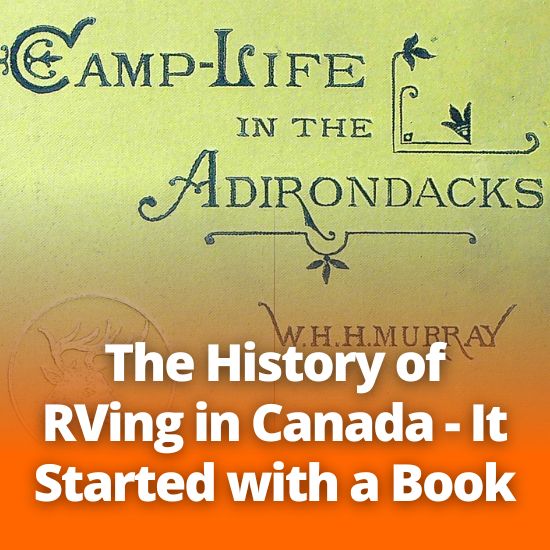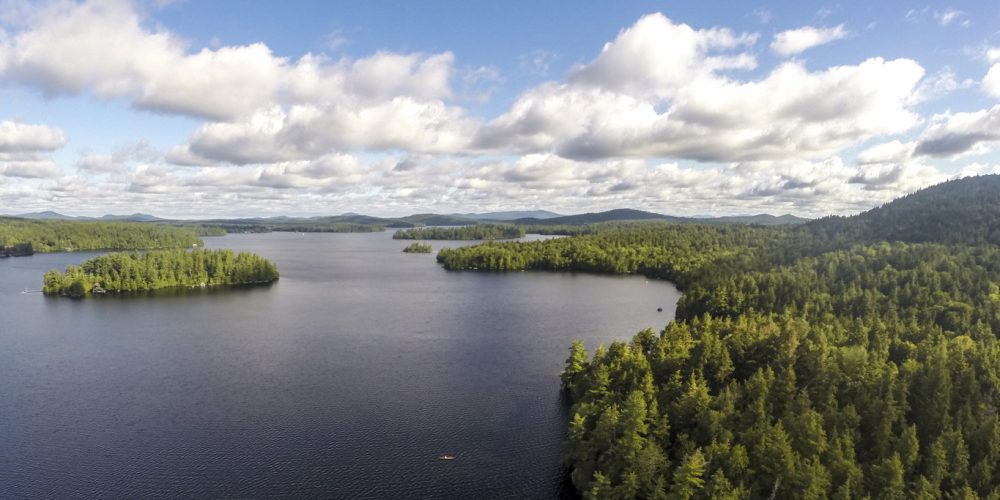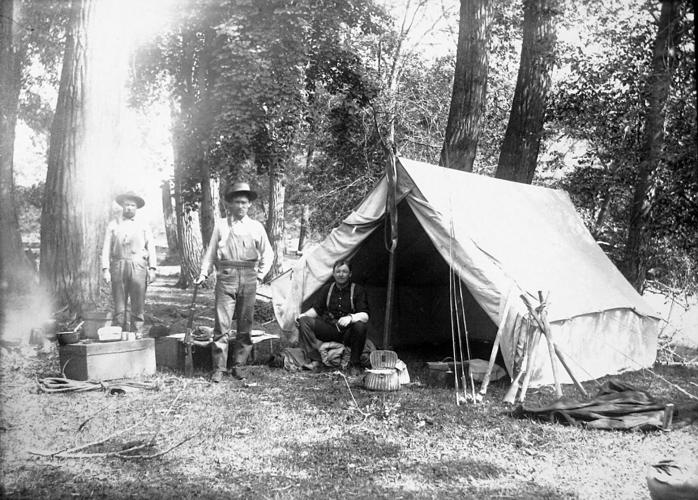
The History of RVing in Canada - It Started with a Book
Is it shared lunacy or love that puts us in an RV, crossing the QE2 and facing every manner of traffic hold-ups from dummies splitting lanes, little old ladies who can’t see three feet ahead, or the occasional moose who’s decided to play God in a game of chicken with a semi. I’m willing to bet it’s a bit of both. You have to love a little crazy to decide to RV, and it’s a kind of crazy that creates life-long bonds between friends, family, and complete strangers who become both.
But how did it start? Who was that unique, special psycho that looked back at dangerous trail blazing settlers, gypsy caravans, and the Donner Party and thought: “That sounds like fun!”
Someone with a little too much time and money on their hands probably – it breeds the kind of insanity that lands mankind on the moon. Well, Jasper is a little closer than the moon and thanks to decades of technological advancement, achievable for everyone who delights in the fantastic.
The answer isn’t as simple as you might think, landing on a single name or year where RV camping stopped being “quirky” but a normal, expected activity. Recreational camping stretches back to the 1800s in North America, and RVing in particular has a shared history between Canada and the United States.
Our ongoing historical series will take you through all the developments of RVing in Canada: where it began, the crazy trailers and motorhomes that have come and gone, and more!
Brace yourself, it’s gonna get weird.

Take a Trip to Sarnac Lake
It all began with a book and a drive for spiritual satisfaction unlike ever experienced. The book in question?
Adventures in the Wilderness; or, Camp-Life in the Adirondacks
William H.H. Murray was a young minister living in the States during the mid-1800s wrote of his trips to the Adirondack Mountains and Sarnac Lake in a series of narrative exercises, a common essay writing practice for ministers used to improve their sermons. While never written with the intent for publication, a friend encouraged Murray to publish these essays in 1869.
Within months of the book’s release, the Adirondack region was set upon by a horde of eager campers, hunters, and anglers from major city centers – nicknamed “Murray’s Rush.” And while this “Rush” would never be repeated, it wasn’t from lack of interest but rather because Sarnac Lake’s facilities expanded with a regularly increasing number of pleasure campers spreading out to surrounding regions.
Like many beliefs that spread like wildfire, pleasure camping so too was ignited by the written word. Now why was that? Well it can’t have just been the holistic, religious roots of Murrary’s writing – not everyone who flocked to Adirondack could have shared the same religious beliefs after all. But Murray’s writing, like religion, spoke to the soul. It emphasized the relief you could find from urban life, the noise, the crowds, the consistently monotonous routine. Where people felt alienated in a crowd of thousands, their hearts and minds unfulfilled, tired, the wilderness and its rejuvenating nature spoke to the restoration of health and belonging, of feeding that empty space created by modern day society.

But that didn’t acknowledge many imitations as the popularity of camping spread, growing in sophistication with alternatives to Murrary’s proselytizing reflections of canoeing, such as those offered by John B. Bachelder in 1875, who proposed in contrary the modes of backpacking, on horseback, and with horse and wagon, the last two offering the capability to bring along more gear and supplies. However, just because it was possible did not mean it was feasible for everyone. While all these manners of camping were embraced across Canada and the United States, those doing so remained in the upper-middle classes, who were the only ones with the time and money able to afford such ventures.
Of course, when there is an opportunity for money to be made even in the most natural of activities, so paradoxically will technology develop. Even back to the 1870s, camping gear began to evolve, all with new materials and manufacturing techniques to improve both comfort and convenience. This pulled in camping enthusiasts like moths to a flame with the common advertising theme emphasizing that while camping offered a unique type of rejuvenation, that didn’t mean you had to suffer discomfort to take part. And by the 1890s, we saw everything from youth groups to government sponsored camping trips to improve health and happiness.
Canada also had its own unique relationship to ‘roughing it,’ with camping traditions associated with sport hunting and fishing existing back in the days of colonization (if we’re talking about pleasure camping, as the Indigenous peoples involved what colonizing settlers considered ‘roughing it’ as part of their cultures and communities). Companies such as Canadian Pacific Railway encouraged outdoor recreation and tourism, and Canada’s first National Park, Banff, was established in 1885
We can even see what is now Canadian Tire (then Woods Manufacturing Company) selling tents, sleeping bags, and other camping equipment with great success to the general public by 1895.
And those were just the first steps into an activity that would become a cornerstone of Canadian culture.